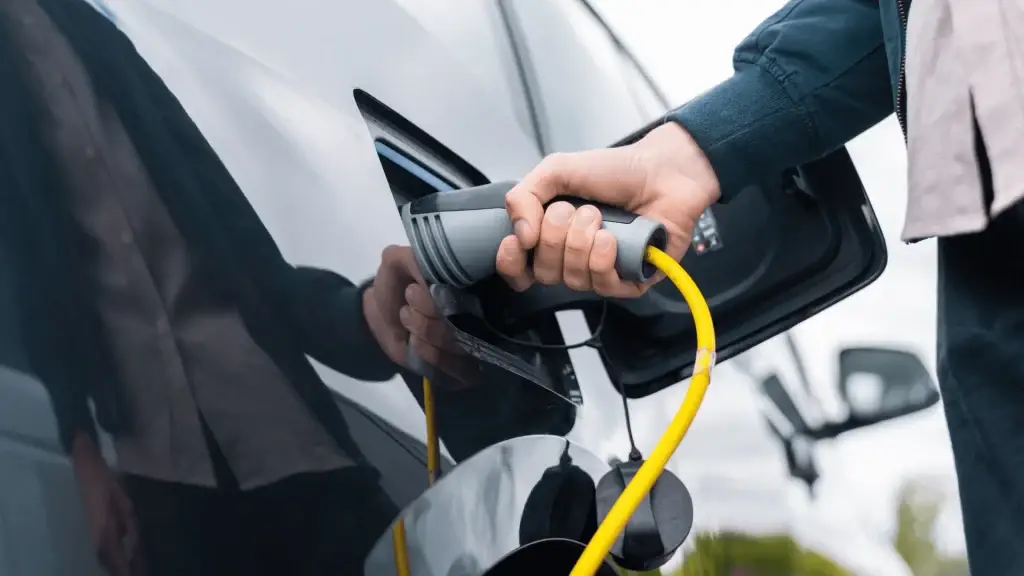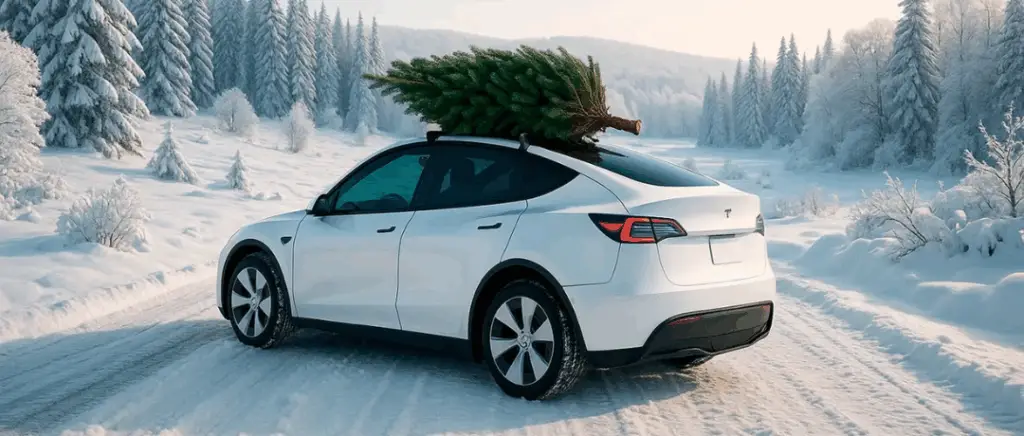Monday to Friday 9am - 12.30pm - 2pm - 7pm
What is a battery an electric car?
The battery pack in an electric car is the element containing the cells that make up the battery. In most cases, depending on the electric vehicle, the batteries are made up of raw materials such as :
- Lead
- Sodium
- Le nickel hybrid metal
- Lithium-ion
Lithium-ion batteries are mostly used in electric vehicles. This technology can also be found in laptops, telephones and household appliances.
Lithium-ion is used in electric vehicles for a number of reasons:
- has a large energy storage capacity,
- The lithium-ion battery does not suffer from memory effect, meaning you don't have to wait until the battery is completely discharged to charge it,
- the lithium-ion batteries They require little maintenance and are highly recyclable.
In order for an electric car to deliver a good autonomyThe battery must have a fairly large capacity, around 50 kWh. This energy capacity is reflected in the weight and size of the battery.
For more information on this subject, a special article is dedicated to the weight of electric car batteries. Don't hesitate to consult it.
How can I save the battery in an electric vehicle?
It's true that over time, the ageing of the battery in your electric vehicle will lose some of its capacity. But with these few tips we've listed, you can extend your vehicle's range.
Moreover, manufacturers of batteries for electric cars estimate that a battery lasts an average of 10 to 20 years before it has to be recycled or replaced.
Paying attention to electric car equipment
As well as powering the vehicle's engine, the battery is used to operate the electrical equipment on board the car. In fact, the various items of equipment, in particular the heating/air conditioning system, have a direct impact on the battery, with around 5 % to 10 % loss of range.
It is therefore advisable to use them sensibly, to avoid putting too much strain on the battery.
Speaking of air conditioning, when you're out and about in town, open the windows before using the air conditioning system to preserve your range. On the motorway, however, the situation is reversed.
Good to know: adjusting the air conditioning correctly will help avoid excessive consumption. It should be set between 5 and 7 degrees below the outside temperature, for the sake of your health and the vehicle's range.
Make sure your electric vehicle is recharged
As we mentioned earlier, most electric vehicles are equipped with lithium-ion batteries. What's particularly advantageous about this battery is that it doesn't suffer from memory effect. This means that whatever the battery's charge level, it can always be recharged at any time.
The memory effect is when the battery's power weakens after a succession of partial overcharges. When this happens, the battery memorises the recharge threshold and therefore does not provide the charging capacity. This causes the battery to lose power, despite the energy available in the battery.
On other electric vehicles, the memory effect has more consequences on Nickel-Cadmium batteries, where the energy capacity of the batteries can be reduced or even eliminated by the memory effect.
When you recharge your electric vehicleTo maintain the chemical structure of the cells in your vehicle's battery and keep it in good health, we advise you to stay within a range of between 10 % and 80 % in daily use. To stay within this range, you can programme it by choosing the charge level in several ways:
- directly on your charging point
- through a mobile application like myWallbox with the kiosk Wallbox
Read also: how do you recharge your electric car?
Using the regenerative brake
If you have an electric car, you've probably heard of the regenerative brake. This feature is unique to electric and hybrid vehicles. The regenerative brake is a system that allows the vehicle to recover energy during deceleration. This not only saves on braking, but also allows the battery to regenerate energy automatically. So when you want to slow down, we advise you to use the brake pedal less, to limit wear on the brake pads and extend your range. This encourages less sporty driving and helps to protect your vehicle.
Tip: if you're going on a long journey with a loaded vehicle, you can slightly over-inflate your tyres by 0.1 to 0.2 bar. The motorway requires a high rolling speed, with a good road surface and fairly wide bends. Slightly over-inflating your tyres will reduce the contact patch with the road and therefore reduce fuel consumption. However, this trick should be avoided in poor road conditions or when it is raining.
Adopting eco-driving
Whether it's an electric or internal combustion vehicle, eco-driving is one of the best ways to reduce fuel consumption and extend the life of your vehicle. life of a clean vehicle.
Most of the time, numerous events and emotions can influence driving. So the more nervous you are, the more energy you consume.
To avoid this, it will be useful to adopt a more flexible driving style:
- Soft start: when you start off, it's in the first few kilometres that your vehicle consumes the most energy.
- Use the regenerative brake rather than the brake pedal. This will enable you to anticipate slow-downs in traffic jams, for example. What's more, in addition to the regenerative brake, the motor stops automatically when the electric car is at a standstill. In this kind of situation, you don't have to worry about energy consumption. The electric car takes care of that.
- Eliminate unnecessary charging in your electric vehicle. The more your vehicle is charged, the more energy it will consume. If you're going on holiday, use roof boxes instead of roof racks. After using them, remember to remove them, otherwise you will consume 10 to 15 % of energy.
- Reduce speed by at least 10 km/h: by reducing your speed, you reduce the energy needed to propel the vehicle. This saves up to 10 % on fuel consumption and extends the vehicle's range.
- Make sure your vehicle is in good condition: making sure your vehicle is in good condition is one of the essential principles for the smooth operation of your electric vehicle.
- Plan your journey in advance: planning your journey will save you a lot of detours and wasted energy. Also, by being located via the ChargemapThis will help you find nearby recharging points available on your route.
What's more, with a smoother ride, you improve the comfort of yourself, your passengers and other motorists. So driving becomes much more enjoyable.
Use your electric car regularly
To maintain the health of the electric battery, some drivers might think that the best solution would be to limit the use of their vehicle. However, when an electric car is left unused for long periods, such as a month, this can accelerate the degradation and fatigue of the battery.
That's why it's important for a car to be used regularly. If your vehicle is used at least once a week, even for short journeys, that's already a good thing.
Good to know: if your electric car is immobilised, we recommend that you protect it from high temperatures and direct sunlight as much as possible. Also remember to protect your vehicle during the winter to keep its battery at an average temperature and a charge level of around 60 %. Leave it unplugged to preserve the health of your battery pack.
Using the "eco" mode on your electric vehicle
Most electric cars are equipped with an "eco" mode, particularly on the Renault Zoe or the Peugeot e-208. This driving mode saves energy by reducing engine power. This driving mode is ideal for short journeys, in town for example, where the ride will be much smoother and more fluid.
What's the point of saving the battery in an electric car?
Saving the battery in your electric vehicle means you can make savings on a number of fronts:
- Economic benefits : This first point is undoubtedly the most obvious. When you adopt these driving habits, you will no longer need to recharge your vehicle all the time and you will reduce your energy bill. What's more, by driving more ecologically, you keep the components and parts of your electric vehicle for longer. That means lower maintenance costs.
- Ecological advantage : In fact, when you adopt eco-driving techniques and take good care of your vehicle, you considerably reduce your energy consumption on every journey.
In conclusion
With these different elements mentioned above, you'll be able to take care of your battery and save money and energy. Because, yes, taking care of your vehicle means fewer visits to the garage and longer service life. battery life. In addition, these practices make it possible to adopt what is known as a eco-driving. This reduces energy consumption and extends battery life, with a view to respecting the environment by limiting CO2 emissions.
































